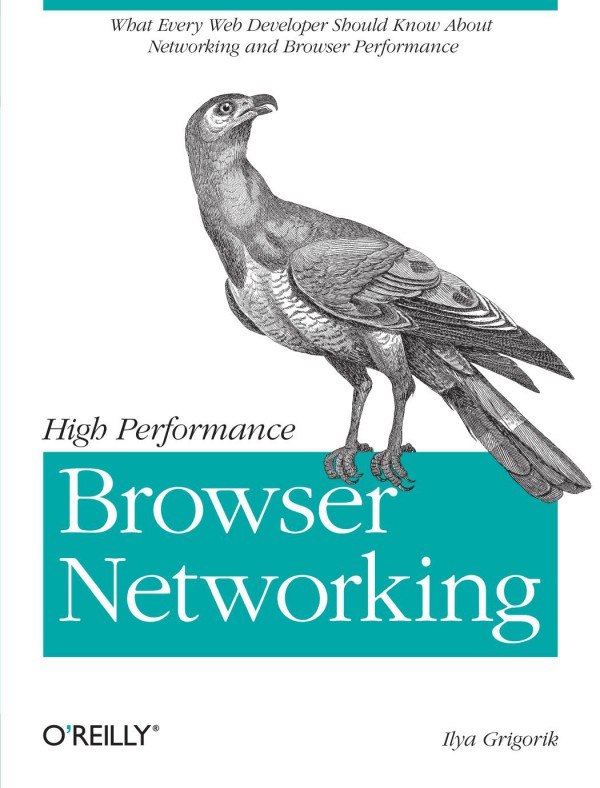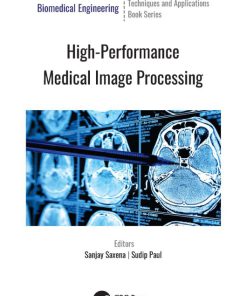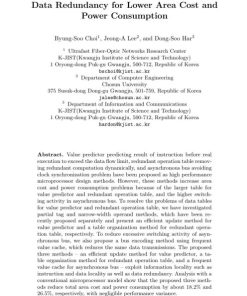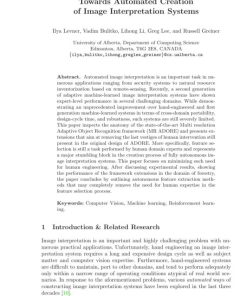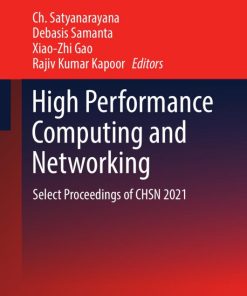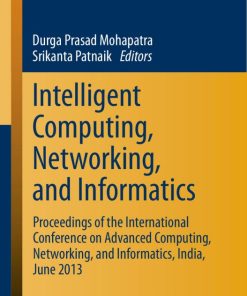High Performance Browser Networking 1st edition by Ilya Grigorik 1449344763 9781449344764
$50.00 Original price was: $50.00.$25.00Current price is: $25.00.
Authors:Ilya Grigorik , Series:Computer Science [213] , Author sort:Grigorik, Ilya , Languages:Languages:eng , Published:Published:Sep 2013 , Publisher:O’Reilly
High Performance Browser Networking 1st edition by Ilya Grigorik – Ebook PDF Instant Download/DeliveryISBN: 1449344763, 9781449344764
Full download High Performance Browser Networking 1st edition after payment.
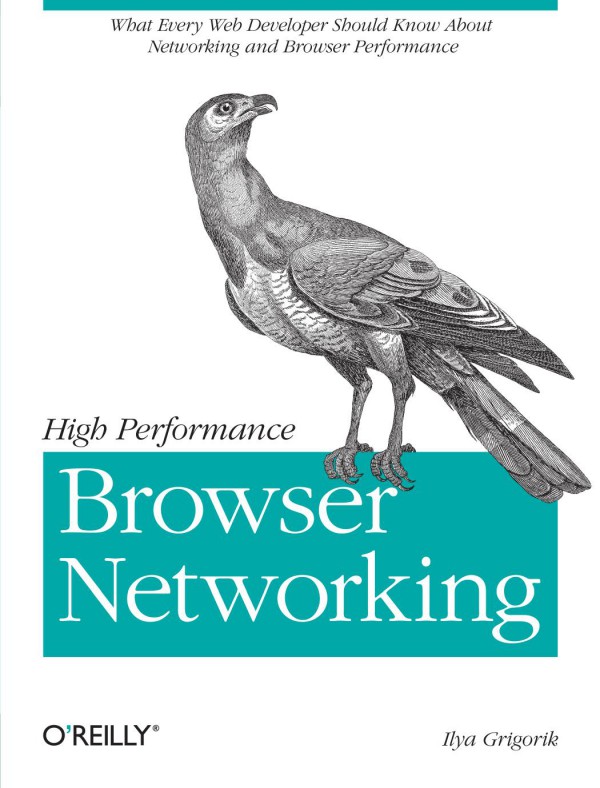
Product details:
ISBN-10 : 1449344763
ISBN-13 : 9781449344764
Author : Ilya Grigorik
How prepared are you to build fast and efficient web applications? This eloquent book provides what every web developer should know about the network, from fundamental limitations that affect performance to major innovations for building even more powerful browser applications—including HTTP 2.0 and XHR improvements, Server-Sent Events (SSE), WebSocket, and WebRTC.Author Ilya Grigorik, a web performance engineer at Google, demonstrates performance optimization best practices for TCP, UDP, and TLS protocols, and explains unique wireless and mobile network optimization requirements. You’ll then dive into performance characteristics of technologies such as HTTP 2.0, client-side network scripting with XHR, real-time streaming with SSE and WebSocket, and P2P communication with WebRTC.Deliver superlative TCP, UDP, and TLS performanceSpeed up network performance over 3G/4G mobile networksDevelop fast and energy-efficient mobile applicationsAddress bottlenecks in HTTP 1.x and other browser protocolsPlan for and deliver the best HTTP 2.0 performanceEnable efficient real-time streaming in the browserCreate efficient peer-to-peer videoconferencing and low-latency applications with real-time WebRTC transports
High Performance Browser Networking 1st Table of contents:
Part I. Networking 101
Chapter 1. Primer on Latency and Bandwidth
Speed Is a Feature
The Many Components of Latency
Speed of Light and Propagation Latency
Last-Mile Latency
Bandwidth in Core Networks
Bandwidth at the Network Edge
Delivering Higher Bandwidth and Lower Latencies
Chapter 2. Building Blocks of TCP
Three-Way Handshake
Congestion Avoidance and Control
Flow Control
Slow-Start
Congestion Avoidance
Bandwidth-Delay Product
Head-of-Line Blocking
Optimizing for TCP
Tuning Server Configuration
Tuning Application Behavior
Performance Checklist
Chapter 3. Building Blocks of UDP
Null Protocol Services
UDP and Network Address Translators
Connection-State Timeouts
NAT Traversal
STUN, TURN, and ICE
Optimizing for UDP
Chapter 4. Transport Layer Security (TLS)
Encryption, Authentication, and Integrity
TLS Handshake
RSA, Diffie-Hellman and Forward Secrecy
Application Layer Protocol Negotiation (ALPN)
Server Name Indication (SNI)
TLS Session Resumption
Session Identifiers
Session Tickets
Chain of Trust and Certificate Authorities
Certificate Revocation
Certificate Revocation List (CRL)
Online Certificate Status Protocol (OCSP)
TLS Record Protocol
Optimizing for TLS
Computational Costs
Early Termination
Session Caching and Stateless Resumption
TLS False Start
TLS Record Size
TLS Compression
Certificate-Chain Length
OCSP Stapling
HTTP Strict Transport Security (HSTS)
Performance Checklist
Testing and Verification
Part II. Performance of Wireless Networks
Chapter 5. Introduction to Wireless Networks
Ubiquitous Connectivity
Types of Wireless Networks
Performance Fundamentals of Wireless Networks
Bandwidth
Signal Power
Modulation
Measuring Real-World Wireless Performance
Chapter 6. WiFi
From Ethernet to a Wireless LAN
WiFi Standards and Features
Measuring and Optimizing WiFi Performance
Packet Loss in WiFi Networks
Optimizing for WiFi Networks
Leverage Unmetered Bandwidth
Adapt to Variable Bandwidth
Adapt to Variable Latency
Chapter 7. Mobile Networks
Brief History of the G’s
First Data Services with 2G
3GPP and 3GPP2 Partnerships
Evolution of 3G Technologies
IMT-Advanced 4G Requirements
Long Term Evolution (LTE)
HSPA+ is Leading Worldwide 4G Adoption
Building for the Multigeneration Future
Device Features and Capabilities
User Equipment Category
Radio Resource Controller (RRC)
3G, 4G, and WiFi Power Requirements
LTE RRC State Machine
HSPA and HSPA+ (UMTS) RRC State Machine
EV-DO (CDMA) RRC State Machine
Inefficiency of Periodic Transfers
End-to-End Carrier Architecture
Radio Access Network (RAN)
Core Network (CN)
Backhaul Capacity and Latency
Packet Flow in a Mobile Network
Initiating a Request
Inbound Data Flow
Heterogeneous Networks (HetNets)
Real-World 3G, 4G, and WiFi Performance
Chapter 8. Optimizing for Mobile Networks
Preserve Battery Power
Eliminate Periodic and Inefficient Data Transfers
Eliminate Unnecessary Application Keepalives
Anticipate Network Latency Overhead
Account for RRC State Transitions
Decouple User Interactions from Network Communication
Design for Variable Network Interface Availability
Burst Your Data and Return to Idle
Offload to WiFi Networks
Apply Protocol and Application Best Practices
Part III. HTTP
Chapter 9. Brief History of HTTP
HTTP 0.9: The One-Line Protocol
HTTP 1.0: Rapid Growth and Informational RFC
HTTP 1.1: Internet Standard
HTTP 2.0: Improving Transport Performance
Chapter 10. Primer on Web Performance
Hypertext, Web Pages, and Web Applications
Anatomy of a Modern Web Application
Speed, Performance, and Human Perception
Analyzing the Resource Waterfall
Performance Pillars: Computing, Rendering, Networking
More Bandwidth Doesn’t Matter (Much)
Latency as a Performance Bottleneck
Synthetic and Real-User Performance Measurement
Browser Optimization
Chapter 11. HTTP 1.X
Benefits of Keepalive Connections
HTTP Pipelining
Using Multiple TCP Connections
Domain Sharding
Measuring and Controlling Protocol Overhead
Concatenation and Spriting
Resource Inlining
Chapter 12. HTTP 2.0
History and Relationship to SPDY
The Road to HTTP 2.0
Design and Technical Goals
Binary Framing Layer
Streams, Messages, and Frames
Request and Response Multiplexing
Request Prioritization
One Connection Per Origin
Flow Control
Server Push
Header Compression
Efficient HTTP 2.0 Upgrade and Discovery
Brief Introduction to Binary Framing
Initiating a New Stream
Sending Application Data
Analyzing HTTP 2.0 Frame Data Flow
Chapter 13. Optimizing Application Delivery
Evergreen Performance Best Practices
Cache Resources on the Client
Compress Transferred Data
Eliminate Unnecessary Request Bytes
Parallelize Request and Response Processing
Optimizing for HTTP 1.x
Optimizing for HTTP 2.0
Removing 1.x Optimizations
Dual-Protocol Application Strategies
Translating 1.x to 2.0 and Back
Evaluating Server Quality and Performance
Speaking 2.0 with and without TLS
Load Balancers, Proxies, and Application Servers
Part IV. Browser APIs and Protocols
Chapter 14. Primer on Browser Networking
Connection Management and Optimization
Network Security and Sandboxing
Resource and Client State Caching
Application APIs and Protocols
Chapter 15. XMLHttpRequest
Brief History of XHR
Cross-Origin Resource Sharing (CORS)
Downloading Data with XHR
Uploading Data with XHR
Monitoring Download and Upload Progress
Streaming Data with XHR
Real-Time Notifications and Delivery
Polling with XHR
Long-Polling with XHR
XHR Use Cases and Performance
Chapter 16. Server-Sent Events (SSE)
EventSource API
Event Stream Protocol
SSE Use Cases and Performance
Chapter 17. WebSocket
WebSocket API
WS and WSS URL Schemes
Receiving Text and Binary Data
Sending Text and Binary Data
Subprotocol Negotiation
WebSocket Protocol
Binary Framing Layer
Protocol Extensions
HTTP Upgrade Negotiation
WebSocket Use Cases and Performance
Request and Response Streaming
Message Overhead
Data Efficiency and Compression
Custom Application Protocols
Deploying WebSocket Infrastructure
Performance Checklist
Chapter 18. WebRTC
Standards and Development of WebRTC
Audio and Video Engines
Acquiring Audio and Video with getUserMedia
Real-Time Network Transports
Brief Introduction to RTCPeerConnection API
Establishing a Peer-to-Peer Connection
Signaling and Session Negotiation
Session Description Protocol (SDP)
Interactive Connectivity Establishment (ICE)
Incremental Provisioning (Trickle ICE)
Tracking ICE Gathering and Connectivity Status
Putting It All Together
Delivering Media and Application Data
Secure Communication with DTLS
Delivering Media with SRTP and SRTCP
Delivering application data with SCTP
DataChannel
Setup and Negotiation
Configuring Message Order and Reliability
Partially Reliable Delivery and Message Size
WebRTC Use Cases and Performance
Audio, Video, and Data Streaming
Multiparty Architectures
Infrastructure and Capacity Planning
Data Efficiency and Compression
Performance Checklist
People also search for High Performance Browser Networking 1st:
high performance browser networking reddit
high performance browser networking pdf download
high performance browser networking 2nd edition
high performance browser networking epub
high performance browser networking goodreads

